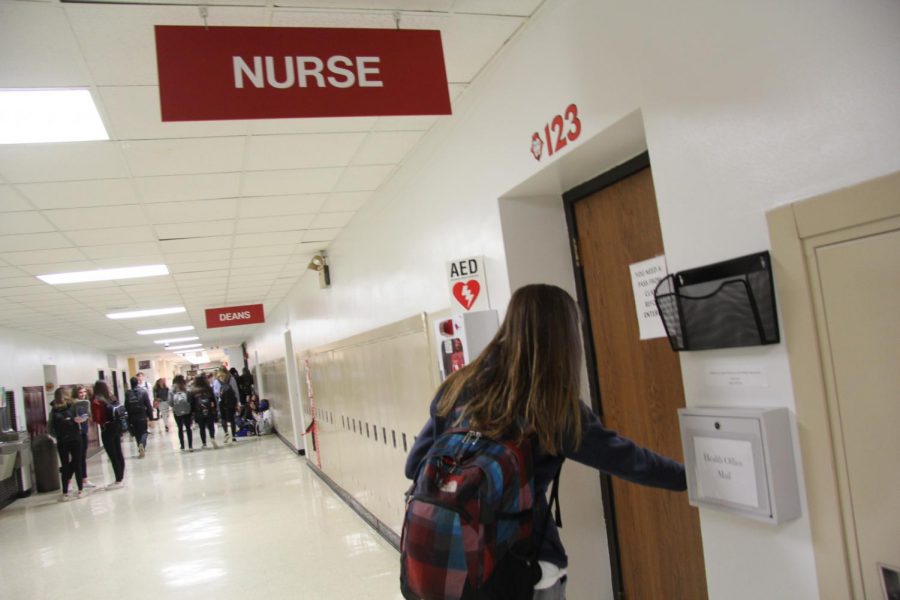Flu season hits home
The rise in flu illnesses nationally might have contributed to lower attendance this winter season.
From America to Hinsdale, what makes this flu season stand out and its impact on students
This past flu season has included a rare that has caused deaths and many hospitalizations, according to the CDC.
The strain spread to the students and the surrounding community, resulting in a rise of both student and staff absences.
The Influenza A-H3N2 strain, this year’s most commonly reported flu type, caused the unprecedented amount of flu diagnosis. The CDC reported that more than 60,000 samples have tested positive for influenza. The CDC also reported a total of 97 pediatric mortalities.
“This season the flu has caused the most hospitalizations in a decade,” said Melissa Geibel, school nurse.
Across the district in both schools, the disease caused unusually low attendance records.
Although the school cannot disclose the exact number of students who sought health care or called in absent for flu-like symptoms due to confidentiality, students and staff have noticed decreased attendance.
“This year the flu affected a lot of people at school. In some classes there were five to six kids missing because they were sick,” said Nate Tamas, junior.
Scientists attribute the spreading of this disease to its rarity. The uncommon Influenza A-H3N2 strain quickly spread to individuals because most have not yet received exposure to the disease.
Vaccinations meant to protect individuals from contracting the flu were also far less advantageous than in years prior.
“The influenza vaccine is only 25 percent effective against this strain, which is why influenza has been so prevalent,” Ms. Geibel said.
Flu vaccinations are usually 40-60 percent effective.
Tamas reported getting a flu shot before the school year started. This, however, did not prevent him from getting diagnosed with the flu on Sept. 23, just a week after Homecoming.
The aggressive nature of the A-H3N2 flu strain also set it apart from years previous.
“I had a fever for about four days; I was coughing, really drained, fatigued, and I had a stuffy nose,” said Anna Lamountain, sophomore.
Lamountain’s illness caused her to fall behind in school work after missing almost a week of school.
A widely accepted procedure at school calls for students to take initiative in making up missed assignments. For those students absent for multiple days, the work begins to add up.
“I had probably five or six quizzes and tests. I am in block math, so I basically have two days of math every single day and so I had to make up all of my lessons,” Lamountain said. “I felt a little pressured [to return to class] because I didn’t want to miss any more school and any more school work because I know that really affects my attendance and overall my grades.”
Mrs. Saunders, an English teacher, acknowledged how it could be difficult for absent students, but suggested that they try and work on makeup work at home.
“I try to say when a kid is absent do as much homework as you can so you are not drowning when you get back because it is really hard to catch up,” Mrs. Saunders said. “I try to be pretty flexible and understanding. I’ll try and drop things that aren’t necessary for them to make up, and I will try and give them a reasonable amount of time to make up other things as long as they don’t take advantage of me.”
The official school policy on student absences states that students must complete any test or quizzes within two days of their absences and any student who calls in absent for three consecutive or more days gets the equal amount of days to finish their makeup work.
The absence policy, while appearing to be clear-cut, usually warrants interpretation by teachers according to students.
“Some of my teachers are understanding and give me as much time as I need, whereas others are very demanding and expect that assigned work or tests to be done immediately,” said Kristiana Strtak, junior.
The flu season started early this year and is past its peak; however it is still deadly.
“This means the flu cases should begin to decline in frequency though the flu typically circulates until mid – April,” Ms. Geibel said.
Ms. Geibel recommends washing hands frequently, covering coughs and sneezes, getting good nutrition and getting enough sleep as preventative steps to take in order to keep everyone healthy.







